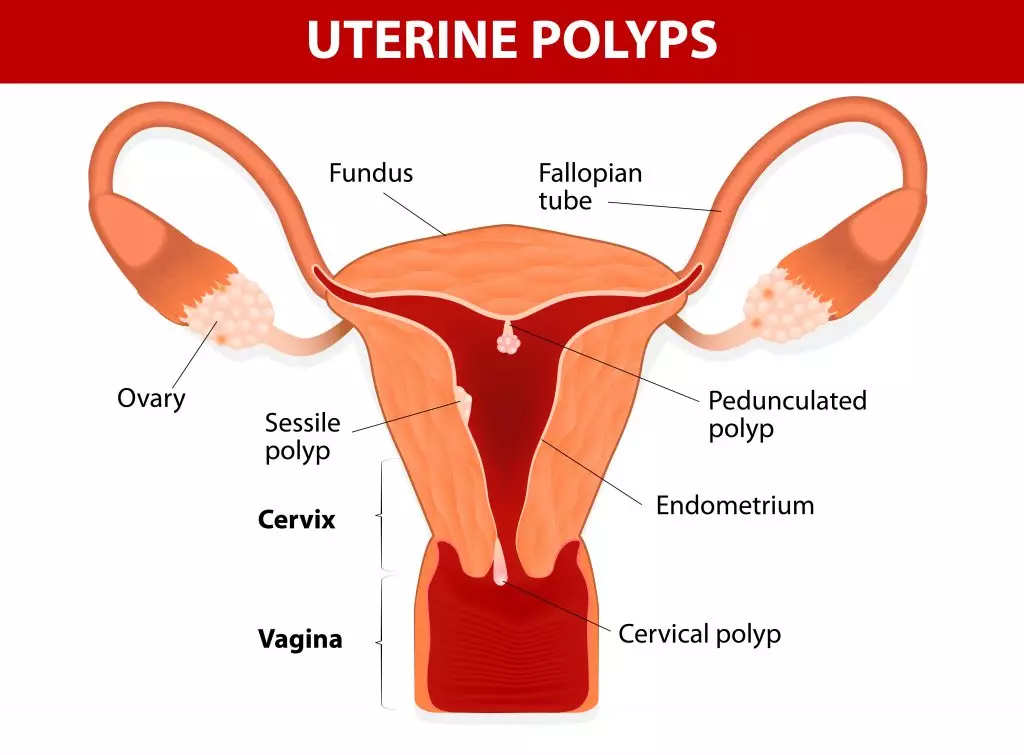Fibroids v. Polyps
Uterine fibroids and uterine polyps are two different types of growths in or on the uterus. They both can be asymptomatic in some women but may cause similar, and debilitating, symptoms in others. They are made up of different tissues, often require different treatments, and can pose a different risk of developing cancer.*
Uterine fibroids
Uterine fibroids are noncancerous growths that develop in or on the outside of the uterus. They are dense tumors made of smooth muscle cells and fibrous connective tissue. While fibroids don’t always cause noticeable symptoms, some women suffer severe symptoms that can interfere with daily activities and quality of life. Such symptoms include:
- Heavy and extended menstrual bleeding
- Irregular periods or bleeding between periods
- Painful cramping during periods
- Problems getting pregnant
- Weight gain, bloating, and/or distended abdomen
- Pain during sex and low libido
- Anemia (from heavy bleeding)
- Frequent need to urinate
- Mental health concerns, like anxiety or depression
Uterine polyps
Uterine polyps consist of clumps of endometrial cells, the cells that make up the lining of the uterus (endometrium). Typically these cells would be shed during menstruation, but instead they have clumped together and formed a polyp. Some women have polyps without any symptoms, while others experience some of the symptoms caused by fibroids, such as:
- Heavy menstrual bleeding
- Irregular periods or bleeding between periods
- Difficulty getting pregnant
Polyps can also lead to vaginal bleeding after menopause.

How are uterine polyps different from uterine fibroids?
Some of the main differences between uterine polyps and fibroids are:
- Polyps grow out of endometrial cells; fibroids form from smooth muscle tissue and fibrous connective tissue.
- Polyps only grow inside the uterine cavity or the cervix, while fibroids can grow inside the uterine cavity, inside the muscular wall of the uterus, in the cervix, or on the outside wall of the uterus.
- Polyps typically remain relatively small, rarely growing beyond a couple of millimeters or centimeters, but fibroid size can vary wildly, ranging from the size of a pea to the size of a watermelon.
- Polyps can shrink and resolve on their own at any time, though some require surgical removal. Fibroids naturally shrink once a woman enters menopause, but if you are nowhere near menopause, then you will likely need to treat your symptoms and/or the fibroids themselves in order to find relief. There are a variety of treatments available. Polyps that require treatment can usually be managed with hormonal medications or removed via hysteroscopy.
- Polyps are more common in women who have entered menopause, while fibroids are most common during a woman’s reproductive years.
- Fibroids, also known as leiomyomas, are not cancerous and typically don’t increase your risk of developing cancer. They do bear a resemblance to cancerous uterine tumors called leiomyosarcomas, but a fibroid will not turn cancerous. Polyps, on the other hand, can develop into cancerous tumors, although this is rare.
If you’re experiencing symptoms commonly associated with uterine polyps or fibroids, such as heavy menstrual bleeding, bleeding in between periods, or irregular periods, meet with your doctor. They can diagnose your condition and help you determine what treatment options are best for you.


